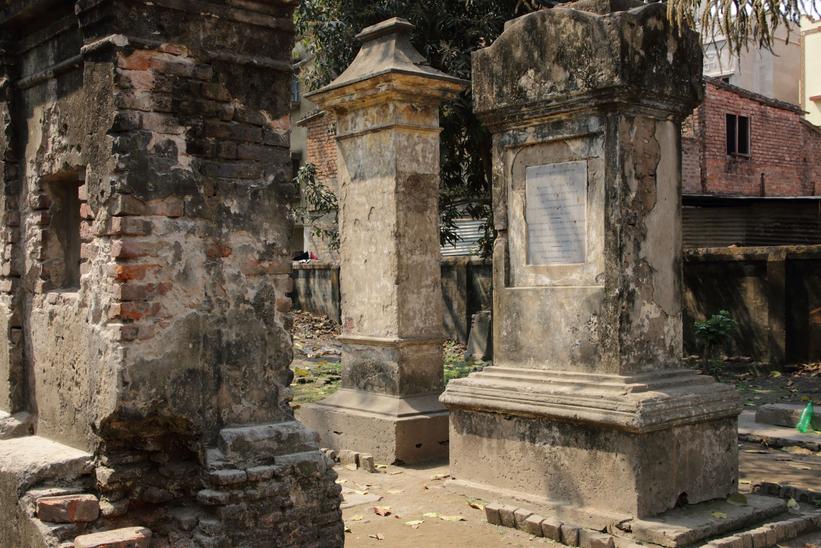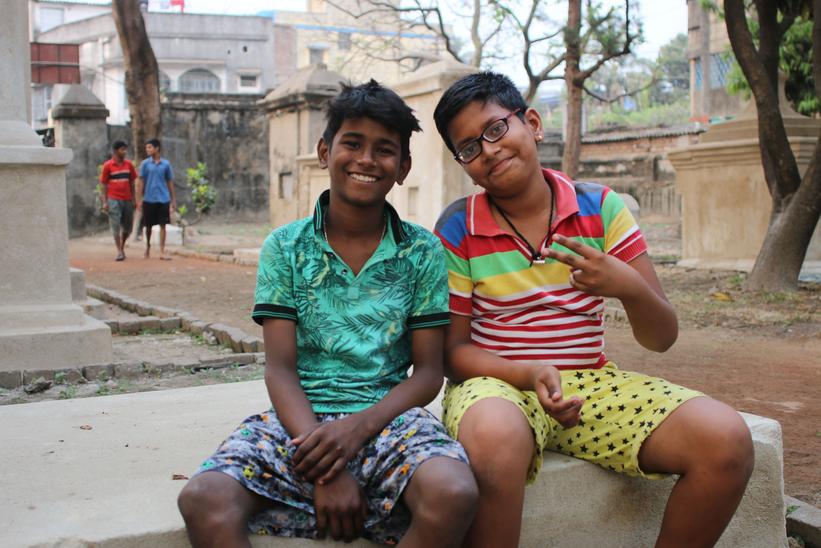The Danish Cemetery
A European colony in India needed a Christian burial ground. Serampore’s small Danish cemetery was not reserved for Danes alone, but was also used by the town’s other European protestants. There were also Frenchmen and Portuguese living in Serampore. They were buried in the adjoining Catholic cemetery. The British Baptists, who founded Serampore College, are buried in the town’s Baptist Mission Cemetery. Serampore also features a large Muslim burial ground. Most Hindus are cremated and their ashes scattered in the Ganges River.

Buried Danes
Nobody has been buried at the Danish cemetery since the Danes left India in 1845. Because there were no longer any family members to tend to them, the graves gradually fell into disrepair. Today, the cemetery is a historical monument commemorating the period when Serampore was a Danish settlement. The Indian authorities keep up the garden, but the decayed headstones are beyond restoration. Only a few of the names and epitaphs remain legible. One of them is the tombstone belonging to Ole Bie who was head of the Danish trading station for several years. During his time there, Serampore developed into a beautiful city with splendid buildings and squares. Bie died in 1805, shortly before the inauguration of St. Olav’s Church. But what role should a Danish cemetery play in India today?

Playing among Ghosts
Today, local children use the cemetery as a playground. They come here to play cricket, climb the wild growing trees and go exploring between the decayed tombstones. Perhaps they are playing alongside the ghosts of the past? That is what the boys who come here will have you believe. They relate stories of children who have suddenly, and for no apparent reason, fallen down and broken their arm. Nevertheless, the cemetery is one of the few green spaces in the city, so the boys overcome their fears and climb the wall to this small oasis. However, only the oldest children dare stay after nightfall. Now and then Danish tourists also stop by to visit the cemetery.
As part of the National Museum of Denmark’s exhibition “Voices from the Colonies” you can hear the boys tell about the ghosts of the Danish cemetery.
